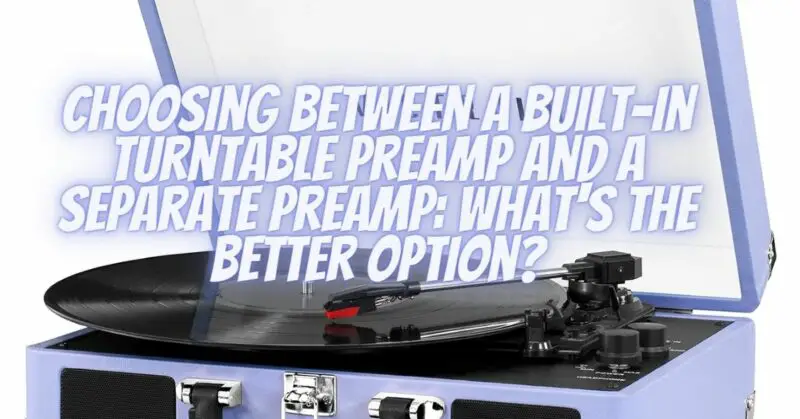When it comes to setting up a vinyl playback system, one of the decisions you’ll encounter is whether to go with a turntable that has a built-in preamp or to opt for a separate external preamplifier. This choice can significantly impact the overall performance and sound quality of your vinyl listening experience. Both options have their merits, and the decision depends on your specific needs, preferences, and budget. Let’s delve into the advantages and disadvantages of each to help you make an informed choice.
Built-in Turntable Preamp: Convenience and Cost-Effectiveness
Many modern turntables come equipped with a built-in preamp. This integration offers several advantages, primarily centered around convenience and cost-effectiveness:
- Simplicity: A turntable with a built-in preamp is an all-in-one solution. It eliminates the need for an extra component in your setup, streamlining the process of connecting your turntable to speakers or an audio receiver. This is especially helpful for those new to vinyl playback.
- Cost: In most cases, turntables with built-in preamps tend to be more affordable upfront since you don’t need to purchase a separate preamp. This is a considerable advantage if you’re on a tight budget.
- Plug-and-Play: With a built-in preamp, you can simply connect the turntable directly to powered speakers or an audio receiver without worrying about adjusting settings or configuring external equipment.
Separate Preamp: Sound Quality and Customization
While a built-in preamp offers convenience, a separate external preamplifier has its own set of advantages that cater to audiophiles and those seeking enhanced sound quality:
- Sound Quality: Dedicated external preamps often provide superior sound quality compared to built-in preamps. They are designed with better components, circuitry, and shielding, resulting in cleaner, more accurate audio reproduction.
- Customization: External preamps offer greater control over the sound profile. You can select a preamp that complements your specific turntable, cartridge, and audio system, tailoring the sound to your preferences.
- Upgradability: Investing in a separate preamp allows you to upgrade individual components as your system evolves. This flexibility is especially important for audiophiles who are constantly seeking to optimize their setups.
- Isolation: Separating the preamp from the turntable can reduce the risk of interference and signal degradation. This can be crucial for maintaining the integrity of the audio signal, especially in setups with multiple electronic components.
Conclusion: Making the Right Choice
Ultimately, the choice between a built-in turntable preamp and a separate preamp depends on your priorities. If you’re looking for a straightforward setup that’s easy to use and budget-friendly, a turntable with a built-in preamp might be the right choice for you. On the other hand, if you’re passionate about achieving the highest possible sound quality, enjoy fine-tuning your audio experience, and are open to future upgrades, a dedicated external preamp is the way to go.
Consider your level of commitment to vinyl playback, your budget, and your desired level of audio quality when making your decision. Whether you prioritize convenience or audiophile-grade sound, there’s an option that will suit your needs and elevate your vinyl listening experience.


